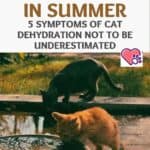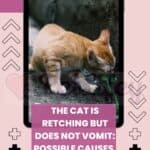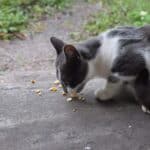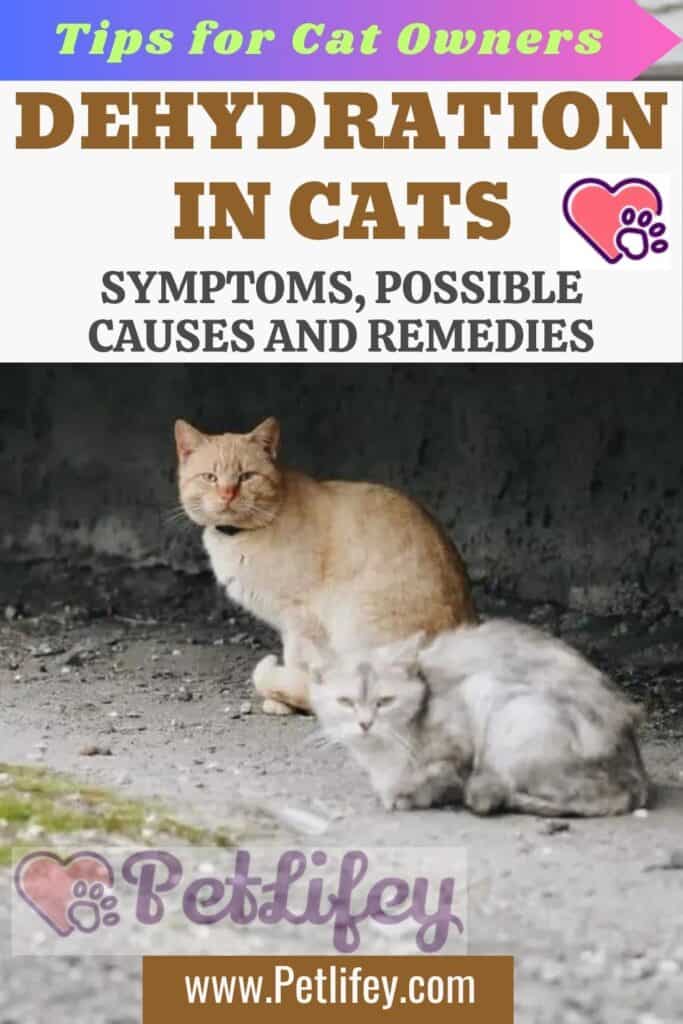
If our cat does not drink enough, he risks suffering from dehydration: here is when there is this danger and how to notice it to remedy it.
Dehydration is the result of an imbalance between the amount of fluids you take in and what is released by the body: it is not a condition linked only to not drinking enough water or taking wet foods, but also due to other factors. A dehydrated cat can face serious consequences, precisely because the body temperature could suffer severe imbalances. Identifying the symptoms is absolutely necessary to run for cover and in the shortest possible time.
Symptoms of dehydration in cats
The cat is usually not a great ‘drinker’: sometimes it tends to play with the water in the bowl and make it ‘overflow’, other times it is even frightened. As a liquid substance, he drinks milk, although lactose causes problems for the cat who is no longer a puppy. The owner attentive to his needs will immediately notice the first signs not only physical, but also those concerning his habits: although the cat can survive without taking too much water, there will be signs to be interpreted as real alarm bells: here are what I am.
The attitude of the cat
If the cat shows the first signs of tiredness, exhaustion and lethargy, it is likely that he has not consumed enough fluids. This general depressed condition can also be accompanied by breathing problems. If the cat is not breathing well, wheezing or wheezing it is likely due to a general ‘dryness’ condition, which will be seen in the following other symptoms.
The body of the dehydrated cat
The first part of the feline body to observe is certainly the mouth: the gums appear stiff and dry, while the mouth is dry. Even the eyes seem to suffer from this ‘tiredness’ since they are sunken, like those of the man who has not been able to rest well. In addition, there is a trick to check if the problem is related to the lack of water, or not: you take the cat’s skin between your fingers and you notice how long it takes to return to place. If it takes more than 3-4 seconds to recover then it is the case to contact the veterinarian: the lack of elasticity of the skin is one of the characterizing symptoms.
The gums of the dehydrated cat
The capillary system that pervades the gums of a feline must be able to fill with blood in a not too long time: when dehydration is already at an advanced level, the blood volume decreases. With a small test it is possible to understand if the gums are in place: by pressing on the gum, observe how long it takes to regain its natural color. If it takes longer than 2-3 seconds, you need to worry. If the color of the gums is always a pale white then we are in the presence of a very high degree of dehydration.
The dehydrated cat drinks less
The attentive owner will have to observe the behavior of his cat: if he does not drink at all, you have to worry. He always checks if he is ingesting the right amount of fluids. It is true that cats generally drink little, but not drinking at all is certainly symptomatic of some underlying problem. It may be due to intestinal discomfort and is often accompanied by other symptoms such as nausea, vomiting and diarrhea. Let’s be careful because sometimes these symptoms can go unnoticed and then it may be too late.
The paws are cold
Even the paws can give clear alarm signals: if they do not heat up easily and remain cold it can be symptomatic of dehydration. Usually the temperature must be constant throughout the body, but if this appears generally warmer than the lower limbs, it is an important fact of lack of fluids.
The causes of dehydration in cats
Attention and care towards our four-legged friends are always the two infallible weapons to guarantee them a peaceful and healthy life. There are many things we can do for him and the precautions we can take to keep him healthy and fit. It is not just about making him drink lots of water, but also about taking care of his diet and his physical activity. Here is a brief vademecum on the causes that lead our cat to dehydration and therefore what we can avoid to prevent this from happening.
Feeding the cat
Croquettes are convenient to ration and much more practical to prepare: but it will be enough to organize our time better to avoid that the cat does not follow a balanced diet. In addition to nutrients, it is important to pay attention to wet food and dry food: it may be useful to add water to food that is already wet. Water in the form of meat or fish broth, which is certainly tastier than the tasteless bottled water. The tastier the food, the more the cat will be tempted to eat it: if it’s good for him then let’s make it as appetizing as possible.
The bowl of water and food
It is not so obvious that all bowls are good for our cat: we make sure that the edge of the container is not too high and creates problems for him to drink. Of course, the content is equally fundamental: better fresh and clean water, perhaps several times a day. If we have to be away from home for several hours and we cannot guarantee him a sip of water every few hours, it is possible to buy dispensers that could be operated by the same cat. If the bowl is made of metal, it will keep the water temperature better, to prevent it from overheating too much in our absence. The ideal place to place the bowl (or dispenser) will be in the shade, but not in the dark and not directly exposed to sunlight. Even placing it next to the litter box could be a problem: the cat does not like to eat where it rests or goes to his needs. On the other hand, if it is considered one of the cleanest animals in the world there must be a reason, right?
Physical activity
It is difficult for cats, the sedentary animal par excellence, to do so much physical activity that they need to hydrate immediately afterwards. Yet we could engage him in some games and pastimes that could make him ‘sweat’: therefore, after these activities it is important to fill his bowl. if he wants to drink he will approach the source of water by himself.
What to do to hydrate a cat
The first thing that comes to mind is certainly to give it plenty of water: yet this could be a problem. It is a mistake to give a dehydrated cat a bowl full of water: given the thirst he could drink it greedily, until he feels bad. A sudden and excessive amount of fluid could have a devastating effect on his delicate digestive system and make him nauseous. Equally important is that the water is not too cold: a few small portions of crushed ice are fine (never cubes) but if we wait for it to melt a little before giving it to him it is better. In addition to fresh water or in the form of ice, it is possible to create a drink at home that will restore the balance of electrolytes in your body. Just add a teaspoon of salt, half of baking soda, 3 of sugar and half lemon or orange juice to a liter of water.
What the vet does in case of dehydration
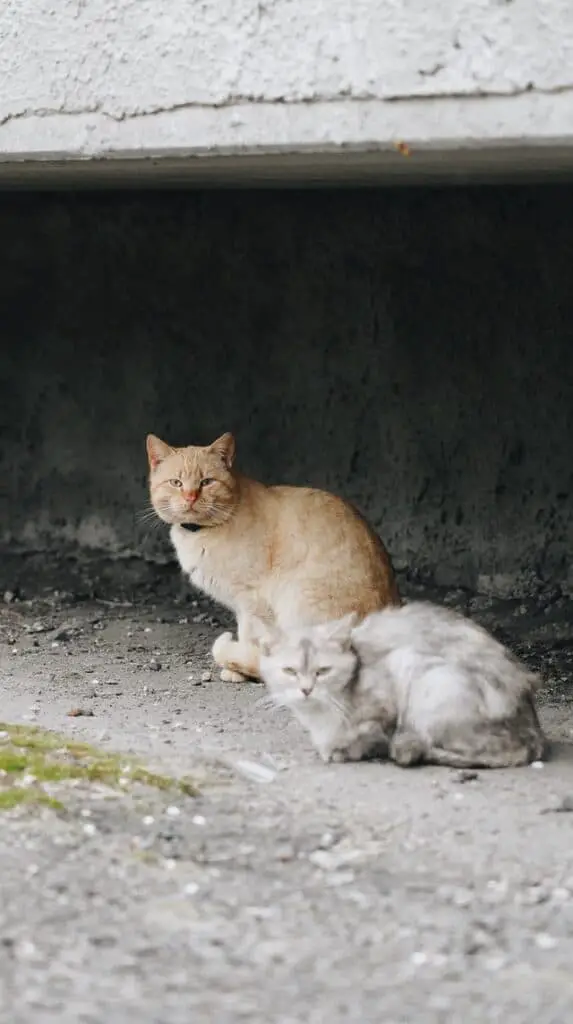
It is possible that the vet opts for a drip to hydrate our cat: the physiological solutions introduced into his mouth will immediately restore the level of electrolytes in his body. If the dehydration is in an advanced state, however, it will be necessary to resort to the drip: it will be necessary to keep the cat in the clinic for at least 24-48 hours and try to immobilize it to prevent it from tearing the needle and getting hurt.

